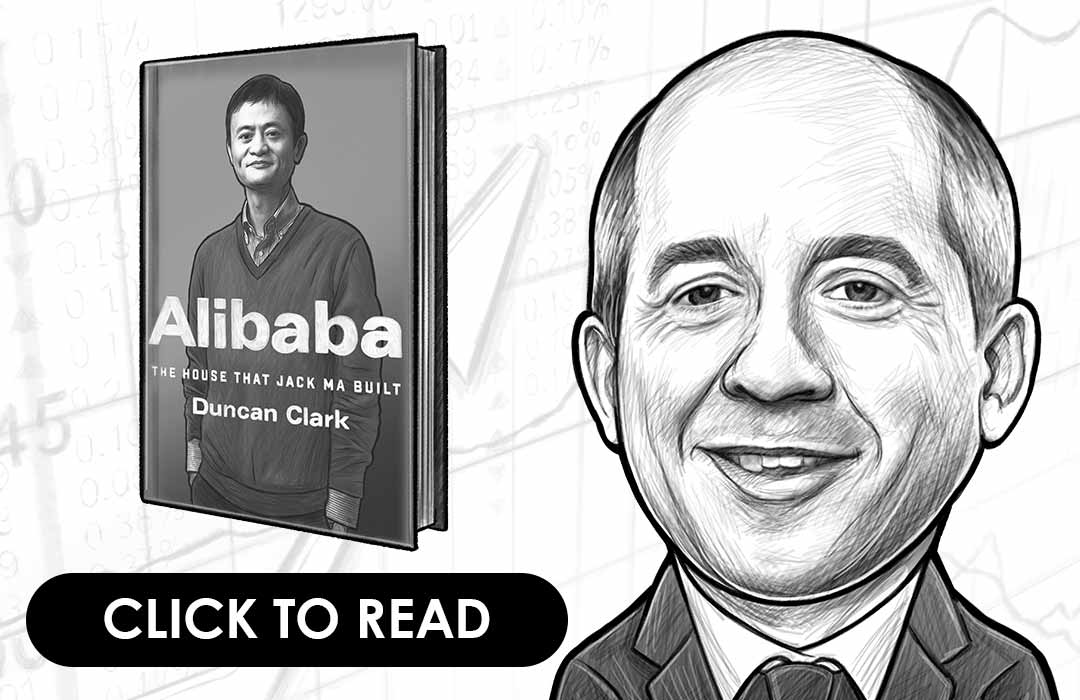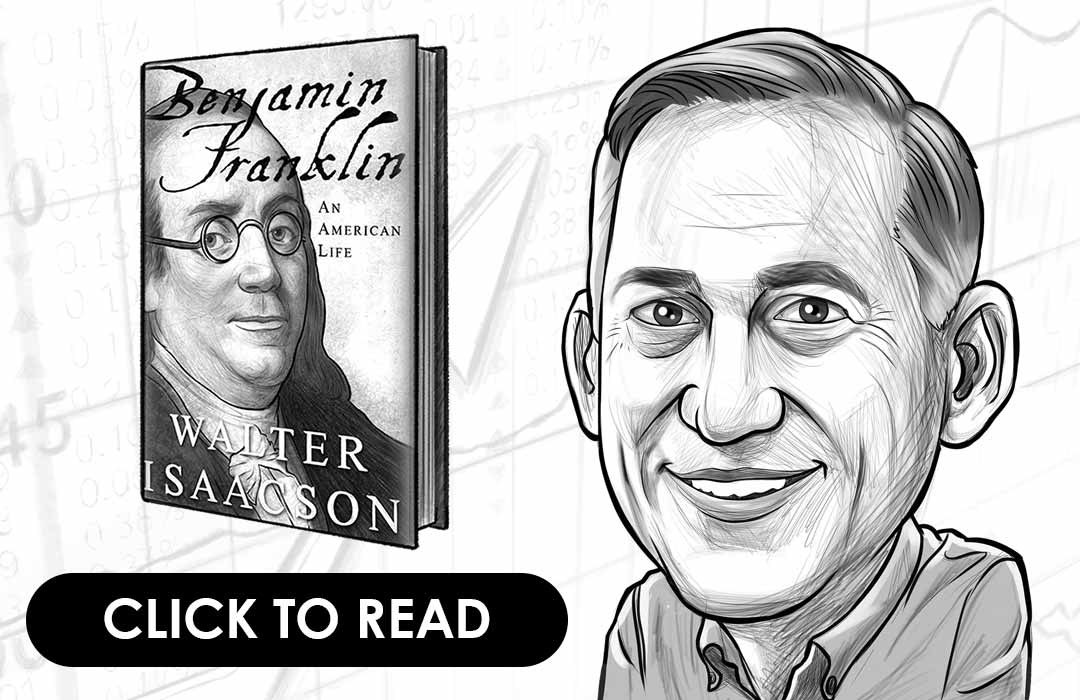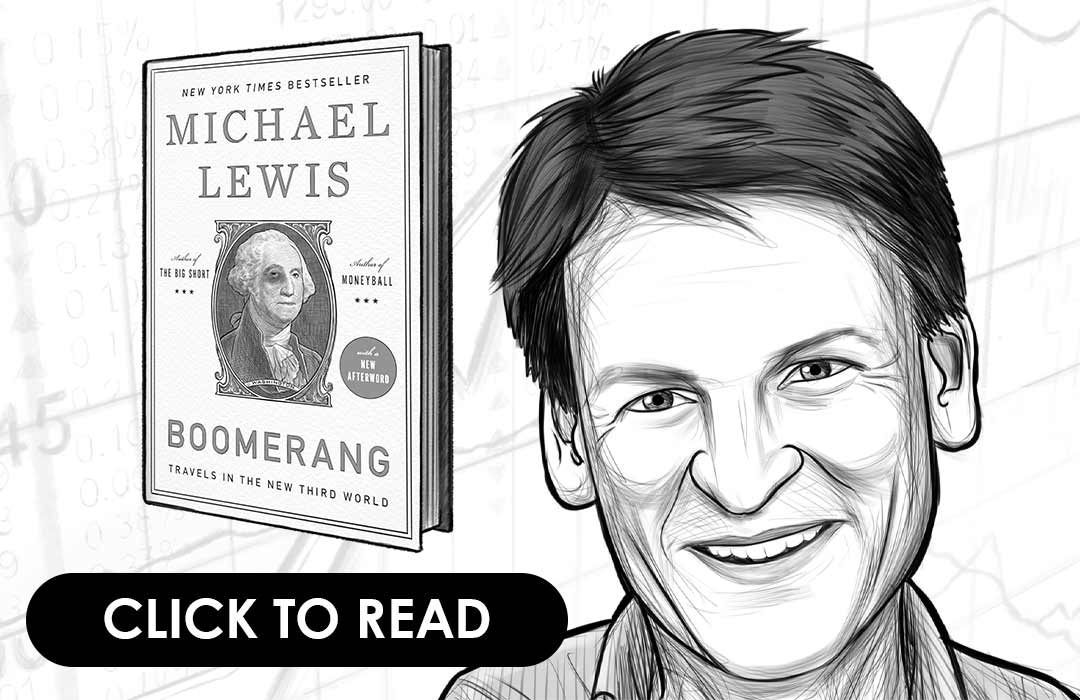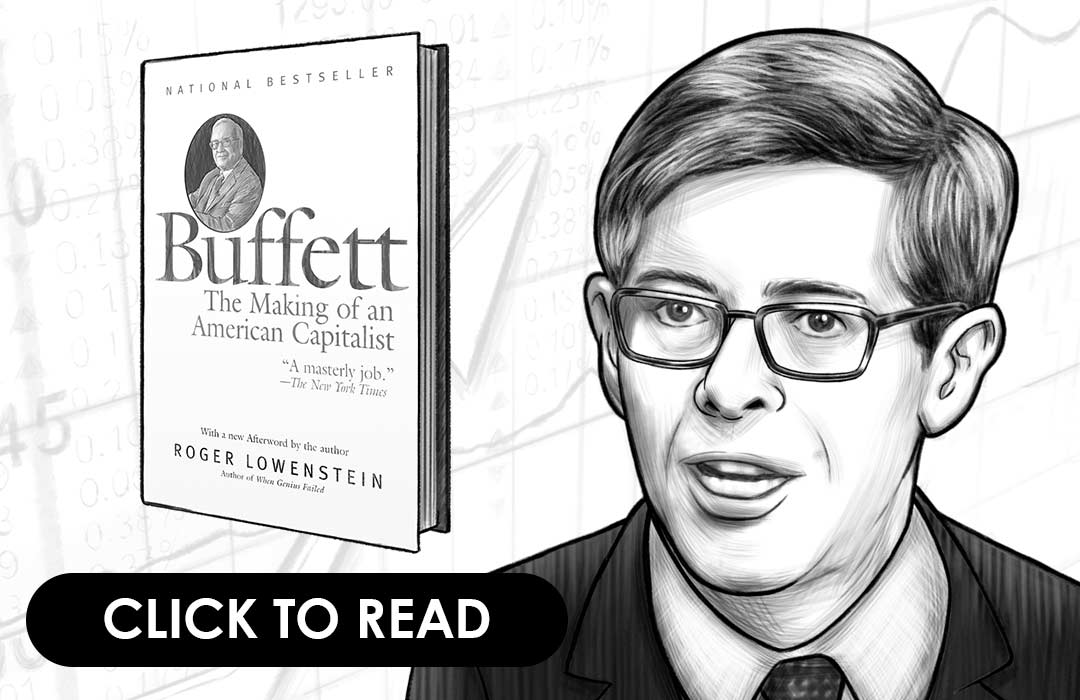An Executive Summary Of Currency War: The Making Of The Next Global Crisis
By James Rickards
WHO IS JAMES RICKARDS?
James Rickards is the Senior MD at Tangent Capital Partners LLC, a bank based out of New York. He is also the Senior MD for the Market Intelligence at the Omnis, Inc., which is a consulting firm situated in McLean, VA. As a speaker at several conferences, Rickards has also been interviewed by the Wall Street Journal, Fox, CNBC, and CNN to name a few. Learn the negative effects of currency wars through this book: Currency Wars: The Making of the Next Global Crisis.
PRESTON AND STIG’S GENERAL THOUGHTS ON THE BOOK
Let’s hope James Rickards is wrong because he thinks the monetary system is on the verge of a major collapse. In my opinion he is outlining many compelling and intelligent arguments, but I’m not convinced an epic collapse is imminent. Where I think the book provides the most value is for any investor that is looking to invest internationally in securities. The book provides a great framework for understanding how currencies work and how the world is in a global competition to devalue their domestic currencies to boost GDP.
Understand the financial markets
in just a few minutes.
Get the daily email that makes understanding the financial markets
easy and enjoyable, for free.
PREFACE
In this book, James Rickards examines the effects of currency wars and how they are feared in international economics. Left unchecked, it could lead to inflation, retaliation, recession and violence. According to James, the next currency war could have more destructive repercussions than the crisis in 2008.
The outcome of the next currency war is yet to be seen, but if the US and other countries fail to evade it, the outcome could be very disastrous. A fail of the dollar is not only a currency issue. It’s an issue of national security. James analyses the situation and provides methods that could be effective in order to evade the new currency war.
CHAPTER 1: PREWAR
In this chapter, Rickards explains how they prepared to set a serious game in motion. The APL, also known as the Applied Physics Laboratory, was set up in 1942 after the attack on Pearl Harbor. It was set up mainly to use applied science to solve weaponry problems. James Rickards received a call in 2008 to take part in a seminar hosted by the APL. This financial seminar was sponsored by the Defense Department and the purpose was to recruit a team of experts who would enact several scenarios in order to prepare the US for the actual war game itself. However, this wasn’t a war game that involved ships and missiles, but in fact, it was a war game that would help the US prepare itself against another major threat: An attack of the dollar.
CHAPTER 2: FINANCIAL WAR
This chapter is a continued narrative of the war game played in the APL. Rickards explains how the game was played and interestingly, although their theories were shot down by most members, it was shocking for him to realize that Vladimir Putin has voiced Russia’s concerns by calling for an end to the dollar as the leading reserve currency and that the currency should be backed by commodities. This was an interesting thought as the first country to move out of the current system might have a big advantage.
In essence, Rickards describes the game deftly and reveals how unprepared the Pentagon was for the currency war that was yet to come. Pentagon learnt a lesson due to the war game that was enacted and they realized that even if the dollar collapsed completely, they still had gargantuan amounts of gold reserved for their safety. However, it was becoming increasingly obvious that the US was heading quickly into financial danger that was similar to the period of the 1930s and 1970s.
CHAPTER 3: REFLECTIONS ON A GOLDEN AGE
In this section, Rickards explains the effects of the currency wars using several examples. He also states that currency wars could arise due to inflation, stagnation, financial crisis and other factors that could have disastrous effects on a country’s economy. He further adds that the outcome of a currency war is never positive. Financial experts cringe to even use the term “currency war”, but instead use phrases such as “adjustment” and “rebalancing” to talk about their efforts to readjust their exchange rates. Having a low exchange rate is a short term solution as the value of a currency is always denominated in another currency. If you include other obstacles like tariffs into the equation, you end up with a very protectionist policy, where aggregated utility for all countries diminishes. However, no matter what the terms are used, the tension in the international circles is far from over, especially when countries begin fighting with each other to get ahead in the race.
Goin further, Rickards describes the benefits of the Classical Gold standard that was in place from 1870 to 1914. Known as the best era in the history of gold, several countries including Japan, Germany, Austria, Spain, and Belgium teamed together to form the “gold club”. The US was one of the last major nations to join this club and it was period of little or no inflation. Rickards also reiterates statements made by Giulio M. Gallarotti, who was one among the best economic historians in that period. Long story short, Gallarotti stated that the economic performance of the US and the UK had significantly improved during the period of the Classical Gold Standard and Rickards enumerates several benefits and explains as to why such a simple, yet powerful period worked. At the end of this chapter, Rickards talks about the creation of the Federal Reserve and the dominance of the US. In addition, he concludes that the tension and uncertainty in the 1920s had made the situation ripe for a full blown currency war.
CHAPTER 4: CURRENCY WAR 1 (1921-1936)
In this section, Rickards explains the effects and aftereffects of the first currency war that took place from 1921 to 1936. He describes the economic crisis of countries like Germany in intricate detail. In order to pay for the war damages of World War I, Germany implemented a risky strategy. Reparations were required to be paid back in foreign currency and not in the German currency “Mark”, Germany started to mass print bank notes to buy foreign currency that subsequently was used to buy foreign currency. Not unsurprising a massive hyperinflation occurred. During very few years the Mark lost up to a trillionth of its value compared to the dollar.
By 1925, the US was also willing to stop its ban on the export of gold and the new price was set at $35 for every ounce. Several other countries launched into final rounds of devaluations and pledged to resume the sale of gold, but it was a little too late for things as the economic and financial destruction wrought by the Weimar hyperinflation and Versailles reparations had encouraged the rise of the Nazi party in Germany. Japan suffered equally since a military clique had taken over the Japanese government and launched several military conquests all over East Asia.
By 1942, the entire world was in chaos and countries were struggling between the Axis and the Allied powers. Countries including England also suffered because of high rates of deflation and unemployment. The US had a huge reserve of gold inflows but it failed in its international responsibilities since it tightened its credit conditions at a time when it was supposed to be loosened.
CHAPTER 5: CURRENCY WAR II (1967-1987)
Rickards explains the scenario of the second currency war that took place from 1967 to 1987. He further describes the effects of the “Nixon shock” that threatened to disrupt the economies of several countries. In 1971, Nixon announced his New Economic Policy that consisted of price controls and immediate wages where the gold window would be closed and a hefty 10% would be applied on imports henceforth. This meant that other countries could no longer convert money into gold, but what shocked other nations was the import tax and they also speculated whether Nixon’s move violated their international guidelines. Many people misinterpreted the rising inflation and saw it as the cause of the weak dollar rather than the symptom. While Nixon blamed international speculators it was rather the US deficit and his own policy that caused it. Nixon wanted the dollar to depreciate.
However, within two years, the US found itself embroiled in the worst recession it had ever faced since World War II. With the GDP collapsing, unemployment rising, and not to mention an oil crisis, the US struggled with inflation and a huge stock market crash. Nixon and Connally had failed and the fact that a nation simply can’t attain prosperity with devaluation seemed to elude them. Currency wars and devaluation never produce growth and jobs, but is a guarantee for inflation.
CHAPTER 6: CURRENCY WAR III (2010-)
This chapter deals with the complex nature of the currency wars that have plagued the world for a long time. Just like other battles, currency battles also have major impacts on the economies. Today, you don’t have to be a central bank to participate in a currency war because these wars are fought 24/7 by traders, bankers, automated systems and politicians to name a few. Other institutions such as the World Bank, IMF, United Nations and private institutions are also involved in these wars.
The world basically has three major currencies. The US dollar, the Euro and the Chinese Yuan combined is 60% of global GDP. The relationship between the economies and therefore also the currencies are of vital importance to the stability of the overall system. Perhaps the most interesting is the relationship between China and the US. China has chosen to peg its currency to the US Dollar ensuring an even bigger trade towards the US. China uses this surplus to buy American securities denominated in dollars especially the US treasury. In the current situation China could redeem treasuries worth more than the entire US gold holding.
Rickards states that the world is heading into its third currency war in a span of just 100 years. The final outcome of this war is yet to be seen, but according to Rickards, it is clear that this war is going to be more brutal than the others, mainly because of the growth in national economies. This war will include several private and official players and the geographical expansions are also increasing the risk of an eminent collapse.
Today, the risk doesn’t lie in devaluation of currencies or the rise in gold prices, but instead, a major risk is the fear of the monetary system collapsing. This could lead to distrust in paper currencies and people can completely lose their faith in the monetary system and head towards hard assets. Rickards further states that this war could be the last one and its deadly effects could mean an end to all the currency wars.
CHAPTER 7: THE G20 SOLUTION
Rickards explains the scenario of the second currency war that took place from 1967 to 1987. He further describes the effects of the “Nixon shock” that threatened to disrupt the economies of several countries. In 1971, Nixon announced his New Economic Policy that consisted of price controls and immediate wages where the gold window would be closed and a hefty 10% would be applied on imports henceforth. This meant that other countries could no longer convert money into gold, but what shocked other nations was the import tax and they also speculated whether Nixon’s move violated their international guidelines. Many people misinterpreted the rising inflation and saw it as the cause of the weak dollar rather than the symptom. While Nixon blamed international speculators it was rather the US deficit and his own policy that caused it. Nixon wanted the dollar to depreciate.
However, within two years, the US found itself embroiled in the worst recession it had ever faced since World War II. With the GDP collapsing, unemployment rising, and not to mention an oil crisis, the US struggled with inflation and a huge stock market crash. Nixon and Connally had failed and the fact that a nation simply can’t attain prosperity with devaluation seemed to elude them. Currency wars and devaluation never produce growth and jobs, but is a guarantee for inflation.
CHAPTER 8: GLOBALIZATION AND STATE CAPITAL
Rickards states that a nation’s currency serves as its Achilles’ heel since its collapse can destroy everything else along with it. Most markets are interlinked though trading strategies that could seem complex to a layman, but those markets also remain discrete. For instance, while the stock market could crash, other markets including bonds and gold and oil may thrive at the same time. The most important factor is that all these markets are based on the currency and hence, if the currency collapses, it takes everything down with it. This is exactly why countries are waging currency wars against each other because they are well aware of the economic disruption it could create.
We’re seeing a new world order. Companies are now born global which means that they have no home currency and will move around wherever the cost of capital is lowest. In a world with numerous state-owned and subsidized companies within the energy and financial sector for instance in China and Saudi Arabia has a currency advantage. Many people in the US mentioned the unfairness but should also remember how the US bailed out the big banks during the financial crisis. In a war nothing is fair.
CHAPTER 9: THE MISUSE OF ECONOMICS
This chapter deals with the significance of economics and the role of economists all over the globe. Economists are treated as high priests and they come up with numerous complex equations, strategies and models to back their arguments. However, thanks to so many recent failures, the common man is forced to scrutinize these economists with a close eye. With their claims and theories about rationality, multipliers, correlation, efficiency and what not, it has become a threat to the economic condition of a nation.
Rickards explains that the failure of economics is prominent in the Federal Reserve Policy, monetarism, Keynesianism and financial economics. He analyses every factor closely and concludes that it is extremely important to understand the reason for failure because ignorance has led to stagnation in growth. What he finds is that increasing money supply only works to a certain degree, the result of the remaining is reflected in inflation in currency and assets.
CHAPTER 10: THE MISUSE OF ECONOMICS
Despite the shortcomings of both monetarism and the misunderstood Keynesian multiplier, there are other paradigms used whenever the economic growth seems to falter. With an increase in public debt, it is clear that the debt can only be repaid through devaluation and inflation. When a nation falters in growth, stealing growth from other countries is irresistible, but such strategies won’t serve the purpose and therefore, better solutions are necessary.
Due to this, a new paradigm has evolved from the past 20 years in economic science and it includes complexity theory and behavioral economics among others. Practitioners also admit that there are limitations, but complexity theory has a resilient foundation and is used in many areas including seismology, the internet and also the climate. It is also being applied in the currency and other financial markets, but the challenge arises when you consider the interaction of market dynamics and human behavior. Human nature is complex and understanding behavioral economics could be the key to utilization of the complexity theory and it could also dictate the fate of the mighty dollar.
Academics stubbornly hold on to models and formulas based on the efficient market hypothesis. The problem is that these “precise” models and formulas give a false impression of certainty. In reality the irrationality of people is simply too complicated to model. One simple example of the irrationality is that studies have found that people would rather have 80% of $3,200 than 100% certainty of $3,000. Clearly markets, as the aggregate of human behavior, are not rational.
Understand the financial markets
in just a few minutes.
Get the daily email that makes understanding the financial markets
easy and enjoyable, for free.
CHAPTER 11: CURRENCIES, CAPITAL AND COMPLEXITY
Although the money-as-energy model that’s based on the complexity theory has its merits, very few economists today would subscribe to it. The behavioral science is well founded, but many mainstream economists haven’t warmed up to that idea. Central bankers don’t face a sudden collapse of the dollar, yet they are aware of the weakness of the dollar. The collapse of the dollar is not only going to affect the US alone, but it will also have a major impact on the monetary stability internationally where 61% of currency reserves are dollars. Since the US plays the most important role and if the dollar collapses, it will take down others trades and markets along with it. In essence, Rickards outlines four different scenarios with respect to the dollar and calls them the “Four Horsemen of the Dollar Apocalypse”. This includes multiple reserve currencies, gold, chaos and special drawing rights. He further analyses all the outcomes and explains them in great detail.
CONCLUSION: THE FUTURE LOOKS BLEAK
Rickards asserts that we are heading into a major collapse of the dollar, and it’s hard to predict what will happen. Multiple reserve currencies are a possibility, but since it will not solve the overall problem it’s less likely to succeed. The same can be said about special drawing right and the idea of a single global paper currency. A flexible gold standard can be adopted again, as it can ensure price stability and can reduce inflation, exchange rate fluctuations and interest rates fluctuations. This strategy has very little academic support, and is hard to implement. At the end of the day “chaos” is perhaps the most realistic option.







